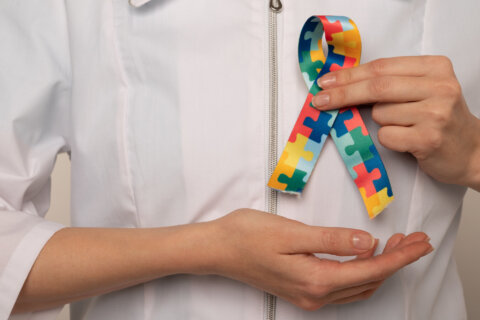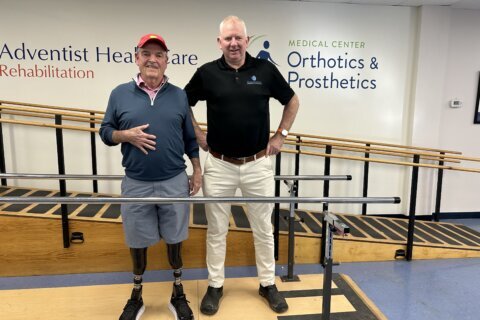
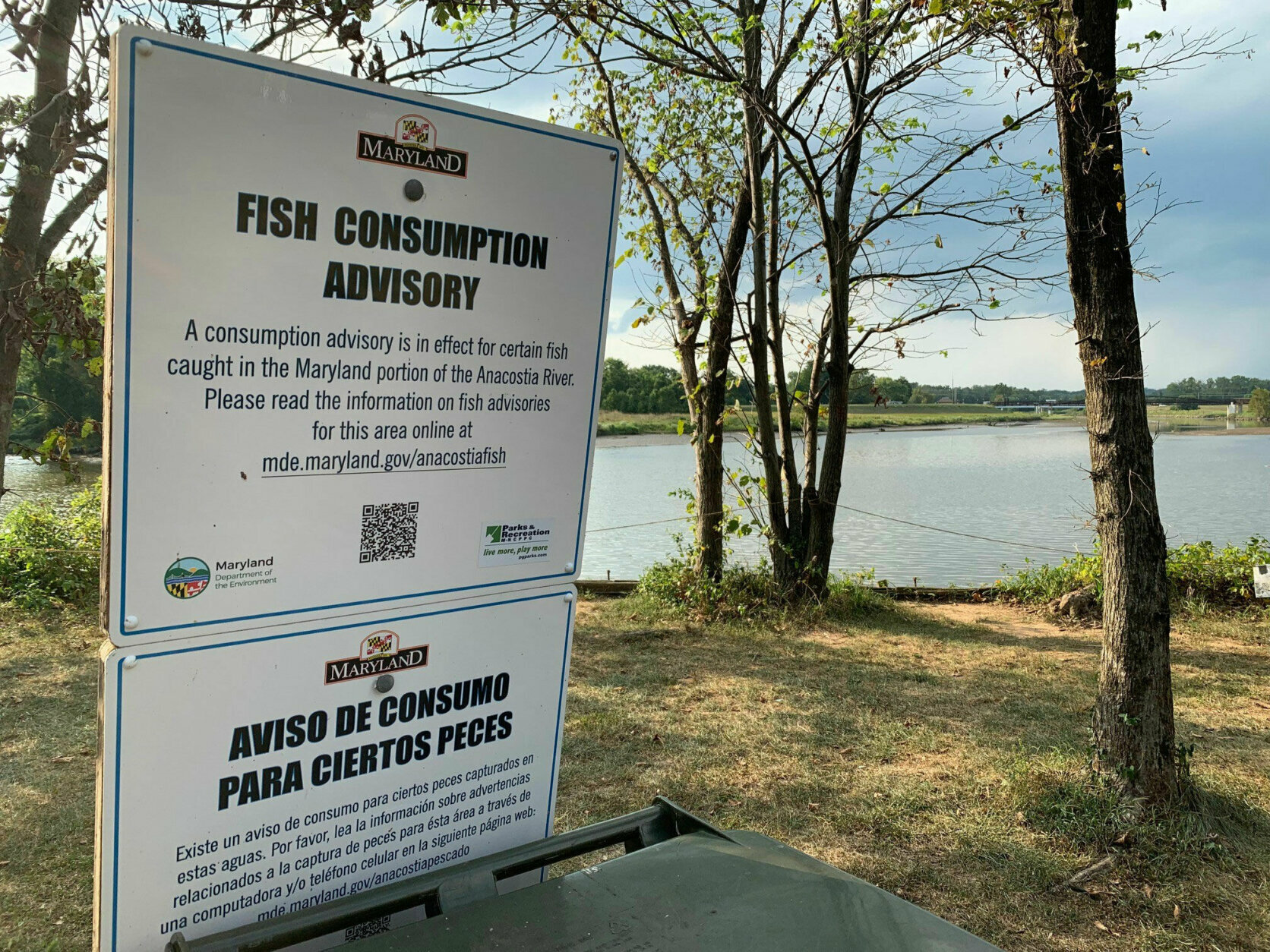
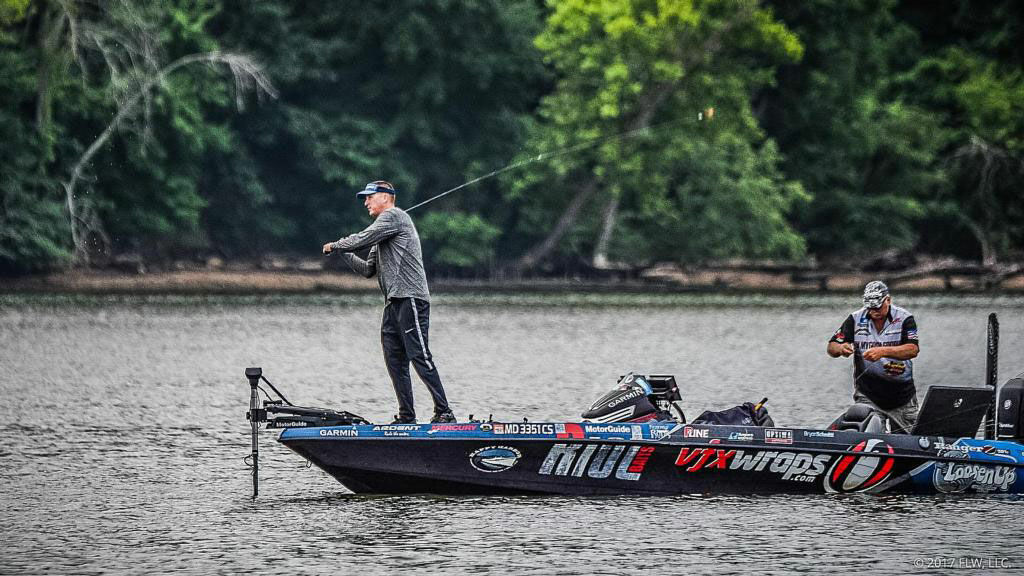
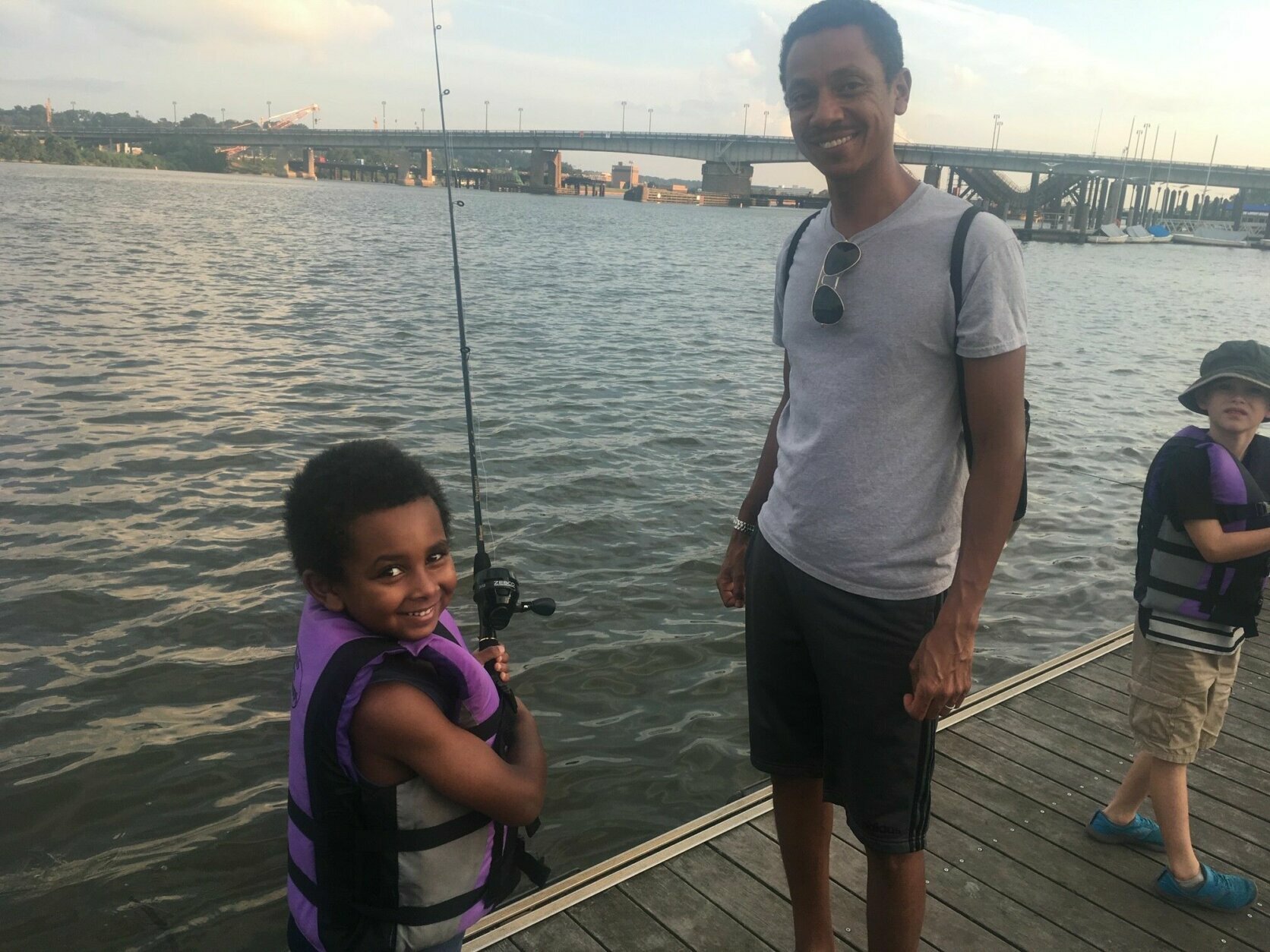
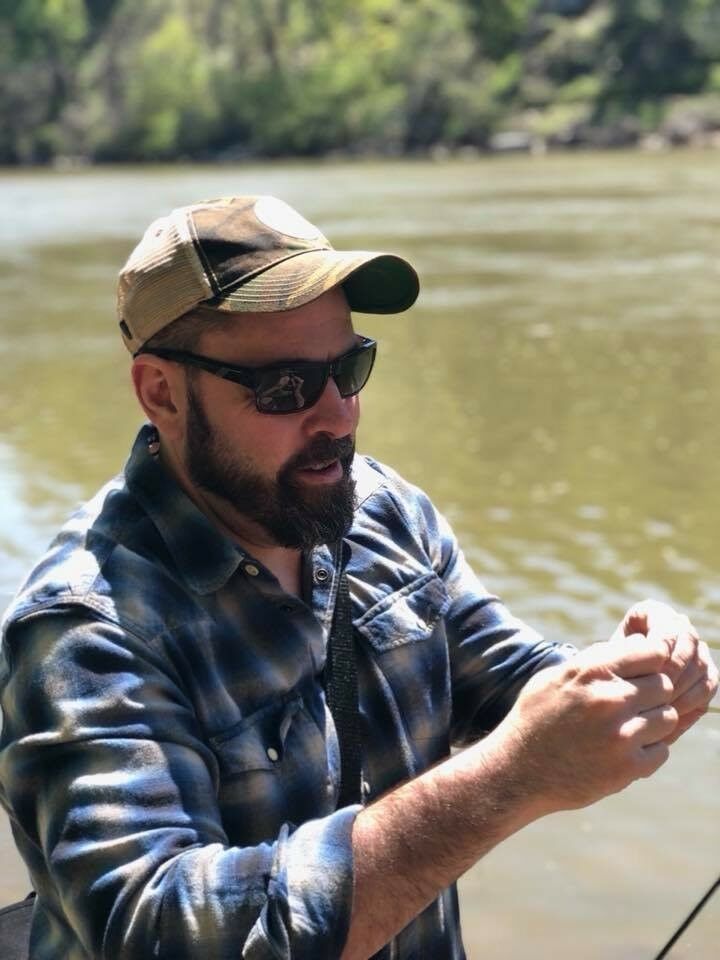
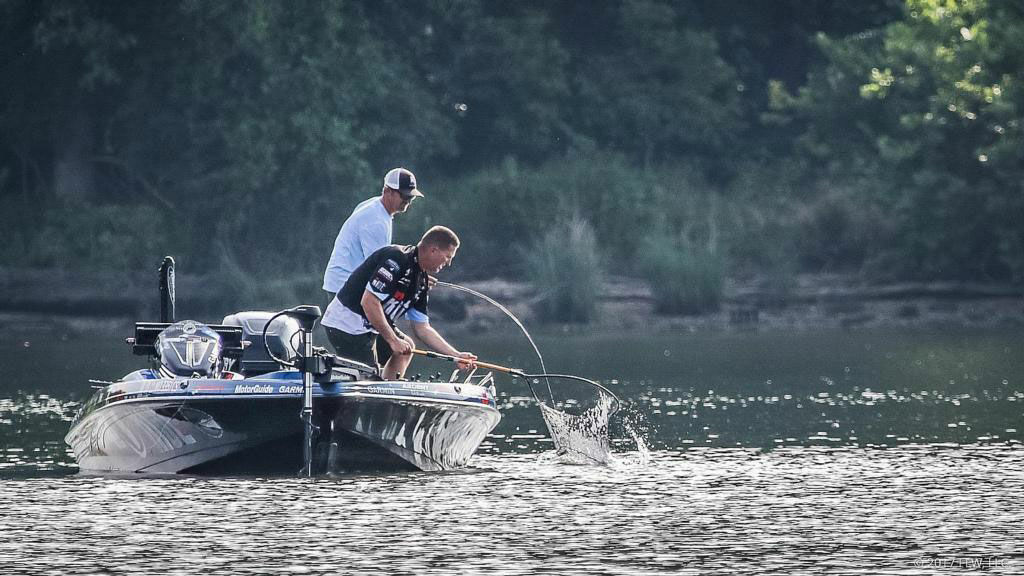
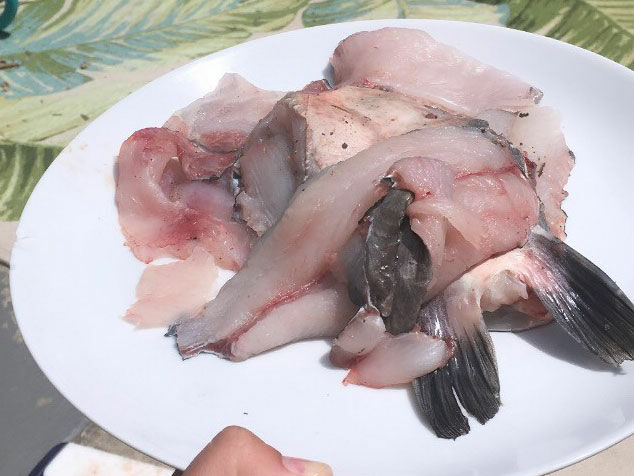
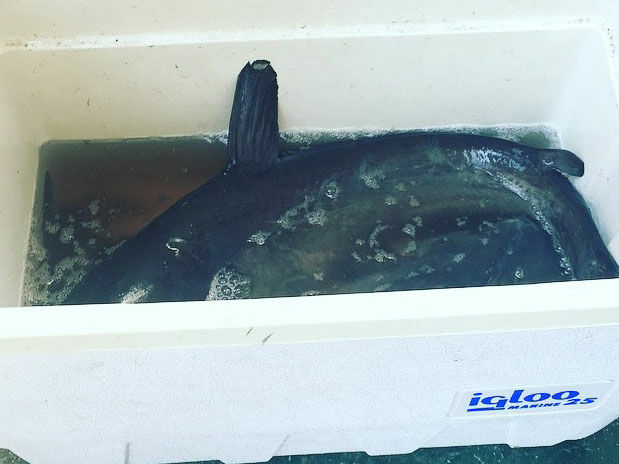
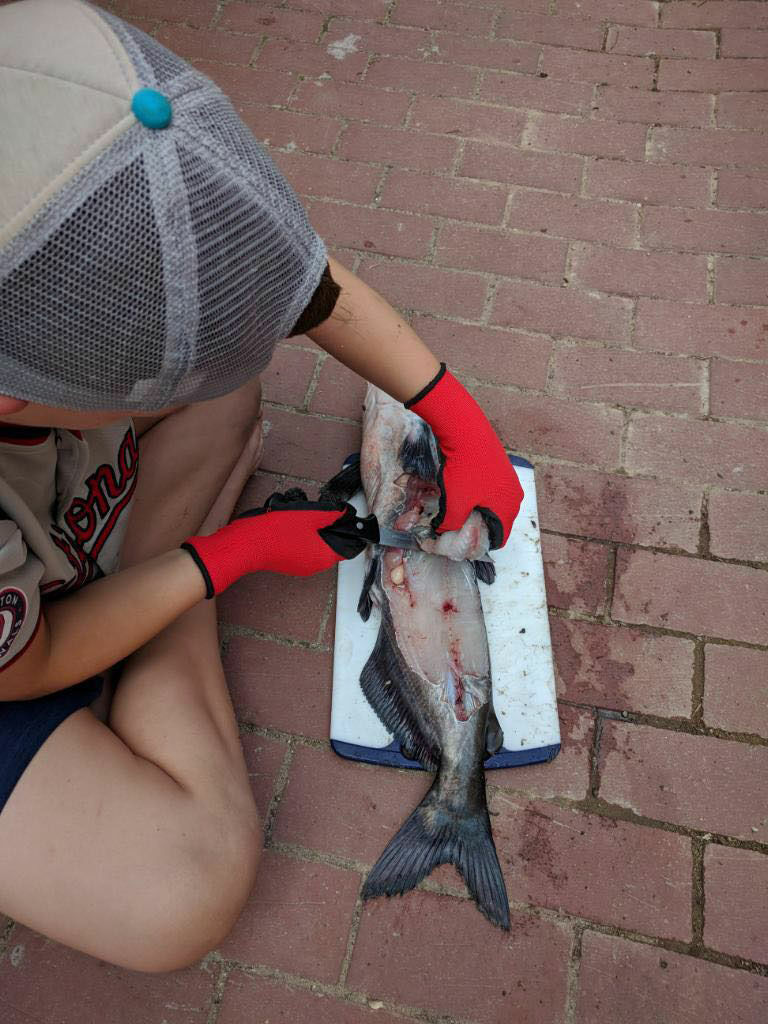

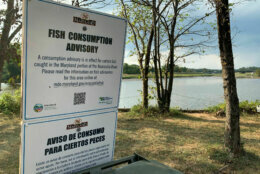
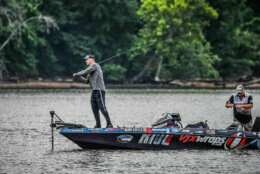
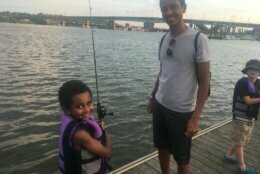

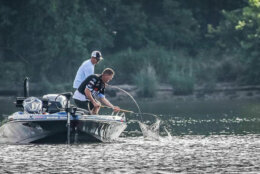
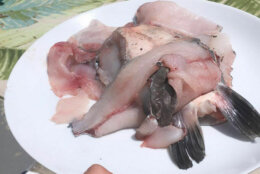
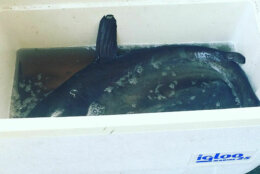
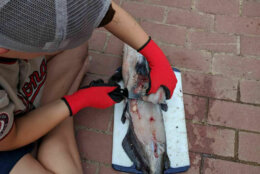
In 2019, Wesley Hanks of D.C.’s Capitol Hill neighborhood would have spent his afternoons and evenings in the late spring and early summer playing baseball or participating in other structured activities.
This year, with so many extracurricular activities on hiatus due to the coronavirus pandemic, the 12-year-old has been having somewhat of a throwback childhood.
While school was in session, he was finishing his distance-learning assignments in the early afternoon and then grabbing his fishing gear and hopping on his bike for the short ride down to Yards Park or the Tidal Basin from his home near Lincoln Park.
He wasn’t alone in finding a soothing activity during this year’s time of rapid change and turmoil, saying “a day spent fishing is better than a day at work.”
Armed with torn-up tortilla as bait, Hanks found himself “shooting fish in a barrel” when he tried to catch catfish at the water’s edge. Toss a few strips of the tortilla in the water and, like chum for a shark, the fish would come calling.
In early June, he had a plan. He was going to snag a big blue catfish and bring it home for dinner. He asked his mother, Sarah, for a ride down to Yards Park because this time, he had a cooler filled with water so he could keep his prize alive.
In just a few minutes, he had a fish.
“It probably took like two minutes to get a bite, it wasn’t that long,” Hanks said, telling his “fish story” a day later as kids played behind him on the Lincoln Park playground.
The catfish was about 18 inches long. The next one was even bigger.
“It was the biggest fish I ever caught, I didn’t weigh it or anything. I should probably do it, I still have the carcass in the trash can,” he said, as his mother rolled her eyes about the thought of her son digging through the trash for a dead fish.
Once he had the fish home, Sarah Hanks posted a few images on Facebook, asking her neighborhood whether the fish would be safe to eat. Once she felt suitably comfortable that a little bit of Anacostia blue catfish, once in a while, would be safe, Wesley got the go-ahead to clean the fish and prep some filets for dinner.
Armed with a knife, he took the fish into the alley outside their home.
“It was the worst smell I’ve ever smelled. Fish guts are no joke. But it was also really cool,” he said.
How did it turn out?
The four other members of the Hanks family gave it a thumbs up. Wesley, however, wasn’t thrilled with the idea of eating his catch once it was on a plate.
“Everyone loved it,” he said. “It was good, but it wasn’t my favorite.”
Sarah Hanks said she thought getting too intimate with fish guts might have been too much for her son.
“He was too personally connected to it,” Sarah Hanks said.
“I thought it tasted like the guts smelled,” Wesley said. “I only liked it after the cocktail sauce overpowered it.”
While it’s generally not recommended to eat too much of the fish you catch in D.C.’s waterways, one local organization is working to make sure that one day, you’ll be able to do that.
Trey Sherard, the interim riverkeeper with Anacostia Riverkeeper, would love to see more kids like Wesley Hanks getting acquainted with the river, and his organization has been working for years to do that.
“It’s a public trust, it’s a jewel. It’s a positive recreation asset,” Sherard said of the Anacostia.
His organization advocates for a “fishable and swimmable Anacostia River.”
“People should be able to eat whatever they catch without having to worry about how many ounces of species and whether that’s going to cause cancer or birth defects down the line,” he said. “And for swimmable, it means you should be able to swim in the river and be sure you cannot get sick from that.”
What can you eat? In Maryland, in D.C. and Virginia
One way Sherard and his group are trying to get people reacquainted with the river is via a popular Friday night fishing program along the docks near Diamond Teague Park, just across the street from Nats Park in Southeast DC.
The program was on hiatus for the first part of this summer, due to the pandemic, but started again July 17 with a socially distant cap of 50 people. The Riverkeeper, along with Earth Conservation Corps, has been putting on basic fishing clinics in the Capital Riverfront neighborhood for almost 10 years.
The program requires everyone to wear masks and runs, weather permitting, every Friday through Aug. 28 from 5 p.m. to 8 p.m. Those who would like to participate are asked to register in advance and fill out a digital copy of the waiver.
In recent pre-pandemic years, up to 100 people would come out to catch fish.
The awareness seems to be paying off, as concerned residents have done their part to reduce waste, environmental programs enacted by local governments are making the water cleaner and infrastructure improvements have reduced rainwater runoff into the river.
Sherard said his organization is interested in asking the District to lift the swimming ban at some of the key sites the Riverkeeper organization tests: the Washington Channel, Kingman Island and Buzzard Point.
“Just to be clear, there is no legal swimming in the Anacostia, the Potomac or Rock Creek Park,” he said, “But [our goal] of swimmable is here in parts of the river. Fishable is farther out.”
Sherard said the rivers become swimmable if the level of E.coli is consistently low. He noted that the District’s Department of Energy and the Environment has worked hard recently to limit the runoff of raw sewage during heavy rainstorms.
It’s harder, though, to reach the goal of “fishable,” Sherard explains.
“When these industrial lubricants called PCBs entered the waterway, they just stay there for years,” he said.
In fact, on the east side of the Anacostia, close to the Bladensburg, Maryland, Waterfront Park, there are multiple signs posted advising people to not eat, or at least seriously limit their fish consumption.
The Anacostia Riverkeeper organization’s recent survey resulted in a conservative estimate that 17,000 people were eating fish caught from the river each year. That number includes all of the people in the area who might have eaten fish from the river: including family members and friends of fishermen.
Now that fish are more abundant in the Anacostia, more people are proudly coming home from a day on the water with their spoils. So it’s actually harder to keep people from eating the fish they catch.
“We knew people were eating fish out of the river,” Sherard said. “And we know the fish are contaminated. … It’s a point of pride to provide for your community or your neighbors.”
Although the local fish generally shouldn’t be eaten, yet, Sherard believes that getting people to fish, even if it’s just for a few minutes on a warm summer night, will make a long-term difference in how future generations care for the river. And once families see how much fun fishing can be, it’s a relatively inexpensive hobby.
For example, a fishing license for District residents costs just $10.
“It used to be people would [only] see the river if they were stuck on a bridge, or stuck on an Orange Line train,” Sherard said. “We didn’t have Capital Riverfront, we didn’t have this accessible area. People didn’t use Anacostia Park as much as they do now, it used to be a place people were told to avoid. We want to introduce people to their river, it’s a public trust, it’s a jewel. It’s a positive recreation asset.”
One concern this year: due to pool closures, many people have been seen swimming in the river. The good thing, Sherard said, that aside from days immediately following heavy rains, the illegal swimmers shouldn’t be getting sick. (Follow @anacostiariverkeeper on social media for weekly updates on water quality.)
Generally speaking, Sherard said, the Anacostia’s water quality is good enough that the organization will continue to lobby authorities about lifting the swimming ban.
Bryan Schmitt is a professional fisherman from Deale, Maryland. On July 15, he won a local bass fishing tournament on the Potomac in Marshall Hall, Maryland, just across the river from George Washington’s Mount Vernon estate.
Schmitt said getting people interested in fishing can have a positive effect on how they take care of the environment.
“I hate seeing trash and litter in the river,” he said. “If people could imagine what it was like hundreds of years ago, it was probably one of the cleanest and prettiest places in the world. It’s one of the places that’s dear to my heart. If there’s any way we could all just do a little bit to help it, that’s definitely worthwhile.”
When Schmitt travels for fishing competitions, he has to push to make people believe he is serious when he talks about how great the fishing is on the Potomac.
“People still don’t believe when I tell them, that it’s some of the best fishing I’ve ever had,” he said. “They say ‘No way, it’s got to be polluted, it’s got to be dirty,’ but I say ‘Hey, I’m telling you I catch a lot of fish up there.’”
Schmitt noted three favorite spots — the Pentagon Lagoon that has a public marina accessible by boat, a spot called “the spoils” that’s on the Maryland side of the Woodrow Wilson Bridge, and the Washington Channel, between Fort McNair and Hains Point.
“You’re looking at some of the coolest things D.C. has to offer, and you’re catching fish,” Schmitt said.
Another D.C. fishing advocate is chef Haidar Karoum. He runs Chloe, a restaurant in Navy Yard.
Some of his favorite fishing comes in the spring — it’s an event called the shad run. The shad run generally happens once water temperatures in the Potomac and nearby streams reach 58 degrees Fahrenheit.
The fish return to the river to spawn and provide anglers like Karoum with endless hours of enjoyment, especially in the area of the Potomac close to Fletcher’s Cove.
“It’s my favorite local fishing moment,” Karoum said.
This year, the shad run was Karoum’s respite from the stress of seeing his business shut down for a few weeks as the pandemic spread in late March. He said he hiked out to the Potomac’s shore to fish a handful of times.
“It was good to get out four times and be outside,” he said. “It made you forget what’s going on and the madness of being in a condo.”
Karoum, who grew up in Oxon Hill, Maryland, and Northern Virginia, compared fishing for shad with light gear to the well-documented tarpon fishing in the Florida Keys and Caribbean. He said the area between the Chain Bridge and the Key Bridge is a great spot to catch the energetic fish.
He said the small shad — some weigh only a couple pounds — produce a world-class fight.
“The amount of fight you get, pound-for-pound, it’s the best, it’s fantastic to see them leap,” Karoum said about the shad, a member of the herring family, one afternoon in early March.
Fertile casting grounds
The Potomac, Anacostia and other local bodies of water provide fertile casting grounds for the urban fisherman.
In fact, because D.C., Maryland and Virginia are surrounded by water, whenever the weather is warm enough to cast a line, you’ll see this sight without looking for long: a man or woman, rod and reel, a bucket with bait, and a cooler with either a few beers or the day’s catch.
Just walking distance from the National Mall, you’ll catch shad, but also sunfish, perch, blue catfish or even a prehistoric-looking invasive species called a snakehead. Snakeheads were illegally introduced from Asia and have been in and around the Potomac for about 20 years.
Bryan Schmitt, the pro who’s seen just about everything, remembers what it was like when he first snagged a snakehead.
“It’s one of those fish, until you actually catch one and see one up close, they’re shocking when you see them. It’s like catching a boa constrictor that can swim. It’s crazy, man,” Schmitt said, recalling his best local fish story.
Schmitt went on to say he kept the fish in his boat’s cooler for a few hours, drove home and called some friends to come take a look. When he opened the cooler, he and his buddies were shocked to see it was still thrashing about. Eventually, he put the fish in a garbage bag and tossed it in the trash …. later that night, he heard some thumping and went out to take a look: it was still kicking.
“They have,” he said of the snakeheads, “a very strong grip on life.”
Schmitt’s been all around the United States fishing both for fun and as a member of the FLW professional circuit. Both Schmitt and Karoum said it’s thrilling to cast a line within sight of the Pentagon or Washington Monument.
“I’ve been fortunate to … fish a lot of world-renowned fisheries for bass. People come from all over the world to fish these certain places,” said Schmitt, who has won almost $900,000 in his pro career. “And the Potomac is probably one of the best you can go to anywhere in the country.”
Schmitt said many people wouldn’t think of the District and its rivers as a fertile fishing ground because of how densely developed the shoreline is, but it absolutely is packed with aquatic life.
“You’ve got the city, and so much going on, but there’s something special about that body of water, it has a lot of fish. Now, you go to some places, you might just catch big fish. Or you go to some places, you catch a lot of numbers, but not a lot of big fish. But the Potomac, it’s kind of special, you have both. You can catch a lot of fish right there in the city, it’s unbelievable.”


